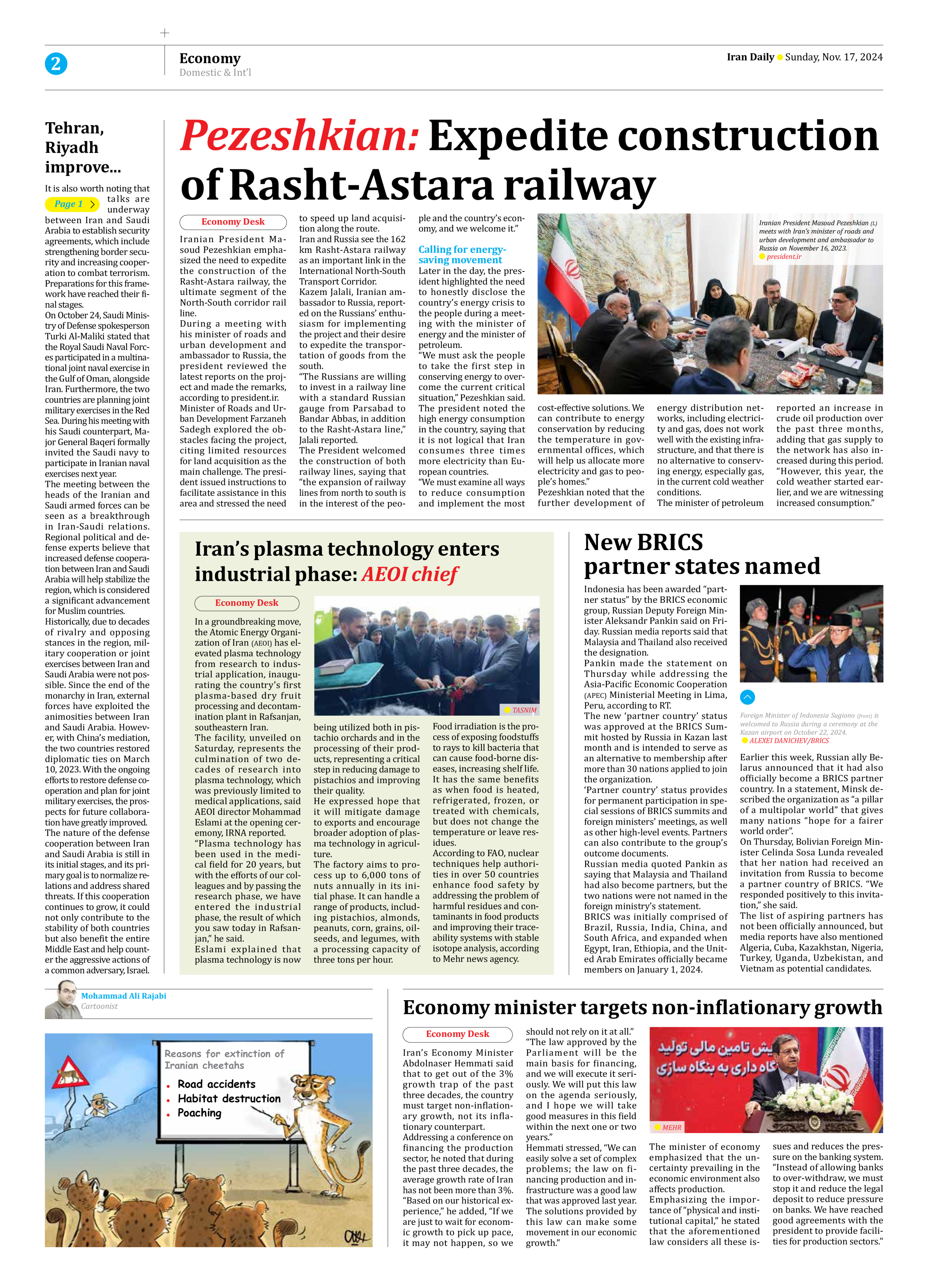
Iran’s plasma technology enters industrial phase: AEOI chief
In a groundbreaking move, the Atomic Energy Organization of Iran (AEOI) has elevated plasma technology from research to industrial application, inaugurating the country’s first plasma-based dry fruit processing and decontamination plant in Rafsanjan, southeastern Iran.
The facility, unveiled on Saturday, represents the culmination of two decades of research into plasma technology, which was previously limited to medical applications, said AEOI director Mohammad Eslami at the opening ceremony, IRNA reported.
“Plasma technology has been used in the medical field for 20 years, but with the efforts of our colleagues and by passing the research phase, we have entered the industrial phase, the result of which you saw today in Rafsanjan,” he said.
Eslami explained that plasma technology is now being utilized both in pistachio orchards and in the processing of their products, representing a critical step in reducing damage to pistachios and improving their quality.
He expressed hope that it will mitigate damage to exports and encourage broader adoption of plasma technology in agriculture.
The factory aims to process up to 6,000 tons of nuts annually in its initial phase. It can handle a range of products, including pistachios, almonds, peanuts, corn, grains, oilseeds, and legumes, with a processing capacity of three tons per hour.
Food irradiation is the process of exposing foodstuffs to rays to kill bacteria that can cause food-borne diseases, increasing shelf life. It has the same benefits as when food is heated, refrigerated, frozen, or treated with chemicals, but does not change the temperature or leave residues.
According to FAO, nuclear techniques help authorities in over 50 countries enhance food safety by addressing the problem of harmful residues and contaminants in food products and improving their traceability systems with stable isotope analysis, according to Mehr news agency.







